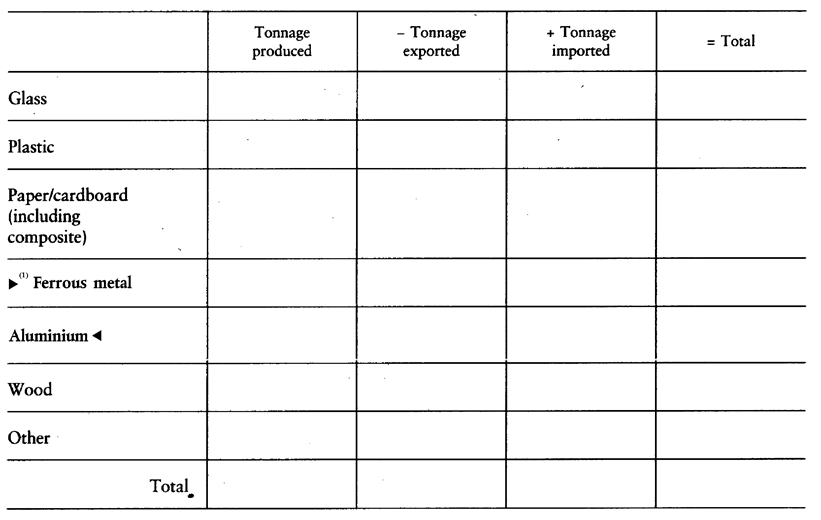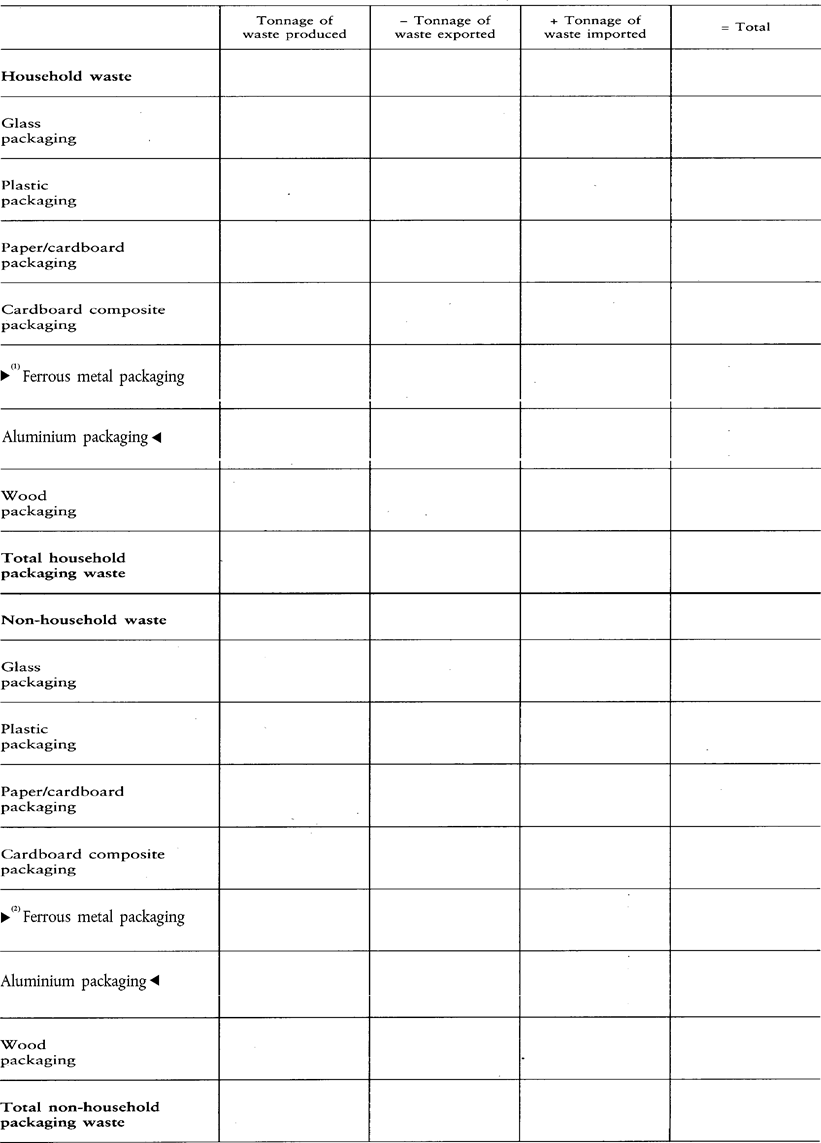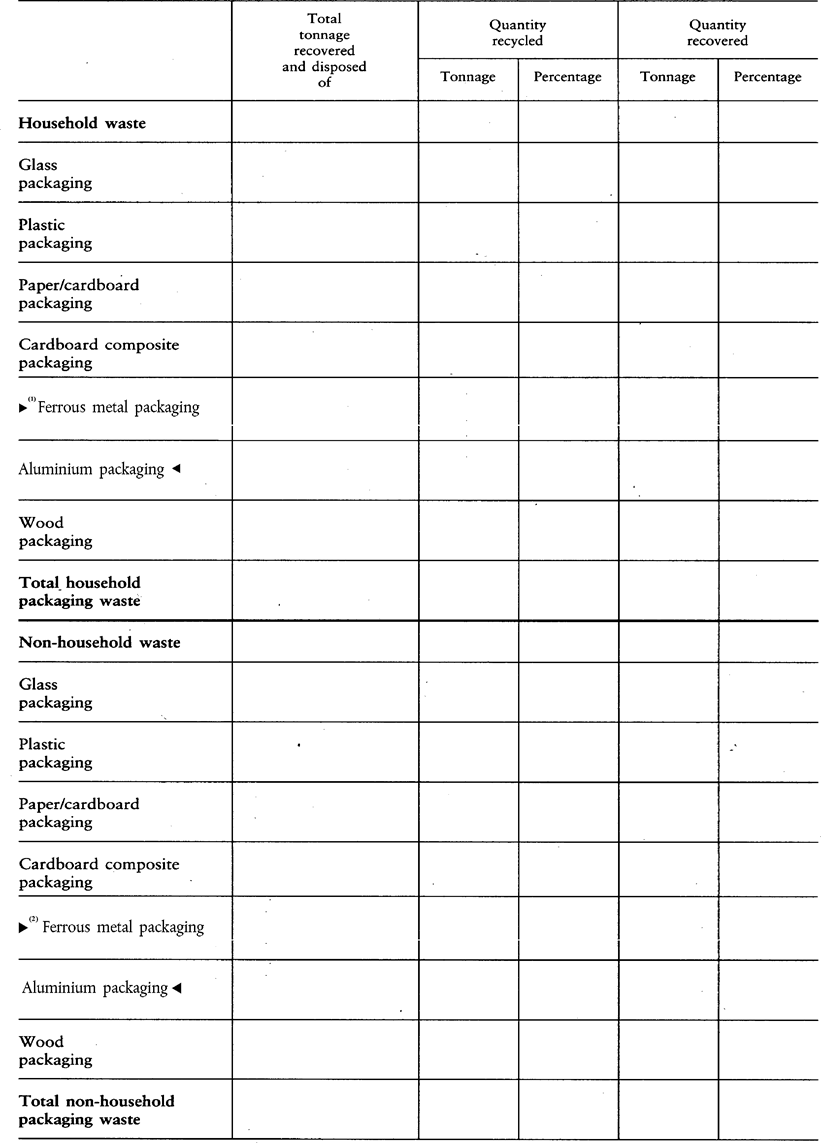[F1ANNEX I U.K. ILLUSTRATIVE EXAMPLES FOR THE CRITERIA REFERRED TO IN ARTICLE 3(1)
Textual Amendments
Illustrative examples for criterion (i) U.K.
Packaging U.K.
Sweet boxes
Film overwrap around a CD case
Mailing pouches for catalogues and magazines (with a magazine inside)
Cake doilies sold with a cake
Rolls, tubes and cylinders around which flexible material (e.g. plastic film, aluminium, paper) is wound, except rolls, tubes and cylinders intended as parts of production machinery and not used to present a product as a sales unit
Flower pots intended to be used only for the selling and transporting of plants and not intended to stay with the plant throughout its life time
Glass bottles for injection solutions
CD spindles (sold with CDs, not intended to be used as storage)
Clothes hangers (sold with a clothing item)
Matchboxes
Sterile barrier systems (pouches, trays and materials necessary to preserve the sterility of the product)
Beverage system capsules (e.g. coffee, cacao, milk) which are left empty after use
Refillable steel cylinders used for various kinds of gas, excluding fire extinguishers
Non-packaging U.K.
Flower pots intended to stay with the plant throughout its life time
Tool boxes
Tea bags
Wax layers around cheese
Sausage skins
Clothes hangers (sold separately)
Beverage system coffee capsules, coffee foil pouches, and filter paper coffee pods disposed together with the used coffee product
Cartridges for printers
CD, DVD and video cases (sold together with a CD, DVD or video inside)
CD spindles (sold empty, intended to be used as storage)
Soluble bags for detergents
Grave side lights (containers for candles)
Mechanical quern (integrated in a refillable recipient, e.g. refillable pepper mill)
Illustrative examples for criterion (ii) U.K.
Packaging, if designed and intended to be filled at the point of sale U.K.
Paper or plastic carrier bags
Disposable plates and cups
Cling film
Sandwich bags
Aluminium foil
Plastic foil for cleaned clothes in laundries
Non-packaging U.K.
Stirrer
Disposable cutlery
Wrapping paper (sold separately)
Paper baking cases (sold empty)
Cake doilies sold without a cake
Illustrative examples for criterion (iii) U.K.
Packaging U.K.
Labels hung directly on or attached to a product
Part of packaging U.K.
Mascara brush which forms part of the container closure
Sticky labels attached to another packaging item
Staples
Plastic sleeves
Device for measuring dosage which forms part of the container closure for detergents
Mechanical quern (integrated in a non-refillable recipient, filled with a product, e.g. pepper mill filled with pepper)
Non-packaging U.K.
Radio frequency identification (RFID) tags]
ANNEX IIU.K.ESSENTAIL REQUIREMENTS ON THE COMPOSITION AND THE REUSABLE AND RECOVERABLE, INCLUDING RECYCLABLE, NATURE OF PACKAGING
1.Requirements specific to the manufacturing and composition of packagingU.K.
Packaging shall be so manufactured that the packaging volume and weight be limited to the minimum adequate amount to maintain the necessary level of safety, hygiene and acceptance for the packed product and for the consumer.
[F2Packaging shall be designed, produced and commercialised in such a way as to permit its reuse or recovery, including recycling, in line with the waste hierarchy, and to minimise its impact on the environment when packaging waste or residues from packaging waste management operations are disposed of.]
Packaging shall be so manufactured that the presence of noxious and other hazardous substances and materials as constituents of the packaging material or of any of the packaging components is minimized with regard to their presence in emissions, ash or leachate when packaging or residues from management operations or packaging waste are incinerated or landfilled.
Textual Amendments
2.Requirements specific to the reusable nature of packagingU.K.
The following requirements must be simultaneously satisfied:
the physical properties and characteristics of the packaging shall enable a number of trips or rotations in normally predictable conditions of use,
possiblity of processing the used packaging in order to meet health and safety requirements for the workforce,
fulfil the requirements specific to recoverable packaging when the packaging is no longer reused and thus becomes waste.
3.Requirements specific to the recoverable nature of packagingU.K.
(a)Packaging recoverable in the form of material recyclingU.K.
Packaging must be manufactured in such a way as to enable the recycling of a certain percentage by weight of the materials used into the manufacture of marketable products, in compliance with current standards in the Community. The establishment of this percentage may vary, depending on the type of material of which the packaging is composed.
(b)Packaging recoverable in the form of energy recoveryU.K.
Packaging waste processed for the purpose of energy recovery shall have a minimum inferior calorific value to allow optimization of energy recovery.
[F2(c) Packaging recoverable in the form of composting U.K.
Packaging waste processed for the purpose of composting shall be of such a biodegradable nature that it does not hinder the separate collection and the composting process or activity into which it is introduced.
(d) Biodegradable packaging U.K.
Biodegradable packaging waste shall be of such a nature that it is capable of undergoing physical, chemical, thermal or biological decomposition such that most of the finished compost ultimately decomposes into carbon dioxide, biomass and water. Oxo-degradable plastic packaging shall not be considered as biodegradable.]
ANNEX IIIU.K.DATA TO BE INCLUDED BY MEMBER STATES IN THEIR DATABASES ON PACKAGING AND PACKAGING WASTE (IN ACCORDANCE WITH TABLES 1 TO 4)
1.For primary, secondary and tertiary packaging:U.K.
quantities, for each broad category of material, of packaging consumed within the country (produced + imported - exported) (Table 1);
quantities reused (Table 2).
2.For household and non-household packaging waste:U.K.
quantities for each broad category of material, recovered and disposed of within the country (produced + imported - exported) (Table 3);
quantities recycled and quantities recovered for each broad category of material (Table 4).
TABLE 1 Quantity of packaging (primary, secondary and tertiary) consumed within the national territory U.K.
TABLE 2 Quantity of packaging (primary, secondary and tertiary) reused within the national territory U.K.
TABLE 3 Quantity of packaging waste recovered and disposed of within the national territory U.K.
TABLE 4 Quantity of packaging waste recycled or recovered within the national territory U.K.
[F3ANNEX IV U.K. IMPLEMENTATION PLAN TO BE SUBMITTED PURSUANT TO POINT (D) OF ARTICLE 6(1A)
Textual Amendments
The implementation plan to be submitted pursuant to point (d) of Article 6(1a) shall contain the following:
assessment of the past, current and projected rates of recycling, landfilling and other treatment of packaging waste and the streams of which it is composed;
assessment of the implementation of waste management plans and waste prevention programmes in place pursuant to Articles 28 and 29 of Directive 2008/98/EC;
reasons for which the Member State considers that it might not be able to attain the relevant target laid down in points (g) and (i) of Article 6(1) within the deadline set therein and an assessment of the time extension necessary to meet that target;
measures necessary to attain the targets set out in points (g) and (i) of Article 6(1) of this Directive that are applicable to the Member State during the time extension, including appropriate economic instruments and other measures to provide incentives for the application of the waste hierarchy as set out in Article 4(1) of, and Annex IVa to, Directive 2008/98/EC;
a timetable for the implementation of the measures identified in point 4, determination of the body competent for their implementation and an assessment of their individual contribution to attaining the targets applicable in the event of a time extension;
information on funding for waste management in line with the polluter-pays principle;
measures to improve data quality, as appropriate, with a view to better planning and monitoring performance in waste management.]




